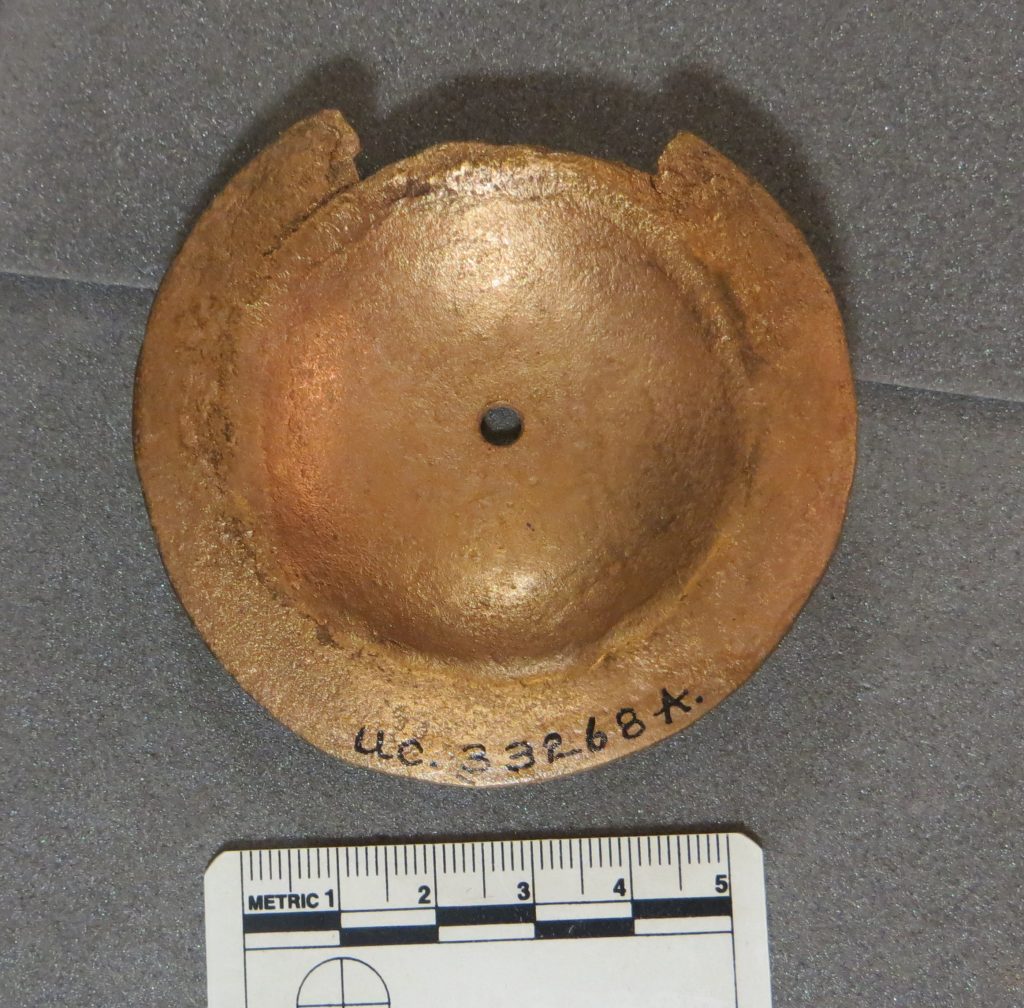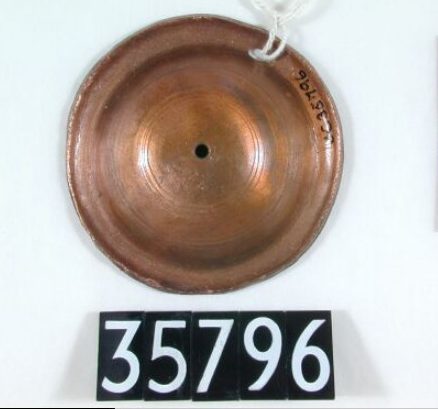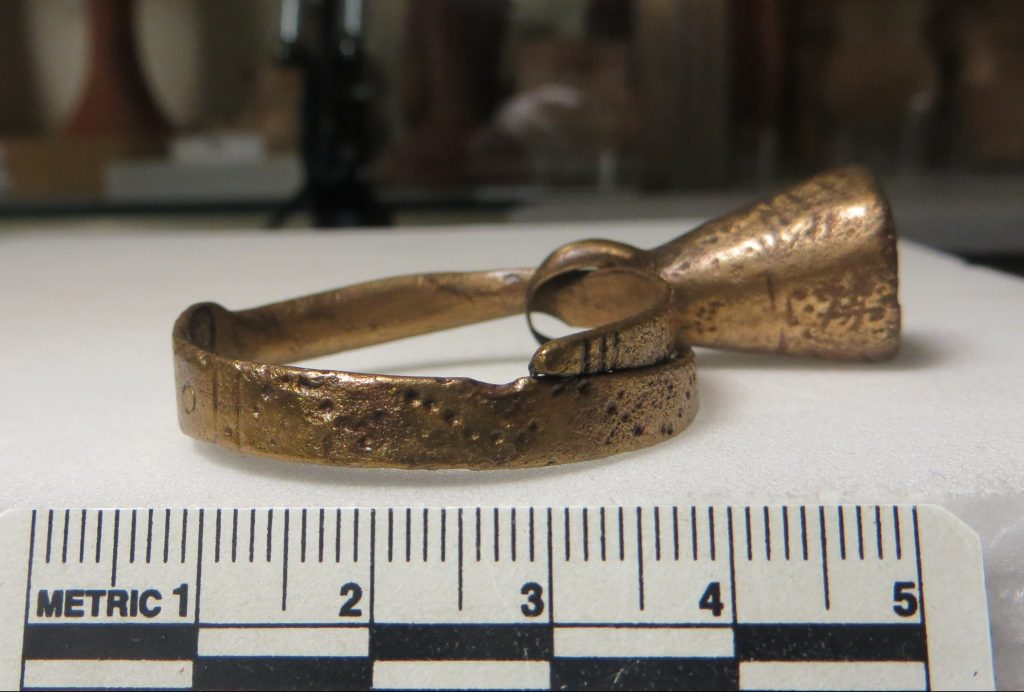Our project relies upon collaboration with a number of different professionals whose expertise we are lucky to benefit from. Canterbury jeweller Justin Richardson recently joined us up at the Petrie to view the instruments first-hand; Justin will be hand-making replicas of some of our selected metal bells and cymbals using authentic materials and techniques, so he needed to identify the methods of manufacture used to create the originals. Many of the processes used in Roman Egypt are still employed by metalworkers today, and looking closely at the artefacts can reveal tell-tale marks on the surface of the metal left from specific manufacturing techniques.

The first thing Justin noticed was that some of the cymbals have a distinctive pitted surface in places. This texture was created by the ‘sand casting’ method of manufacture. This process involves creating a mould by pressing each side of the object to be copied into damp sand, thereby leaving a perfect imprint. Molten metal is then poured into the cavity, leaving a distinctive mottled surface in the process. Sand casting requires an original version from which the mould must be made; this was likely forged by hand, with any hammer marks on the original obliterated by the sand casting process rather than being transferred onto the copies. Sand casting is a cheap and easy method of production, and produces a lower quality object than ‘lost-wax casting’ – making it ideal for an object as simple as a small metal cymbal.

In contrast, the surface of another one of the cymbals revealed hammer marks. It was also significantly lighter than the others, leading Justin to conclude the object had been made by hammering a flat disc of metal over a hemispherical mould to create a dome shape. He also identified a caulked edge – caulking is a metal working technique where the edge of a piece of metal is hammered, end-on, to thicken it up and make it appear more robust than the item actually is. Further identifiable traces included concentric circles on the surface along with a perfectly centred hole, revealing further work on a lathe. Justin’s technical knowledge also revealed some unexpected surprises. The two main copper alloys used for the instruments are brass and bronze; our modern understanding of these materials and the kinds of objects they make resulted in us expecting any brass objects to be handmade, and bronze objects to have been cast – however the exact opposite of this appears to be the case! The manufacture of a bronze bracelet with a bell attached also caught us out.

It would seem logical to make such a flat bracelet by cutting out a strip of metal from a sheet, and then bending it to shape, however closer inspection revealed the object to be cast; the decorative motifs appear soft edged rather than cut into the surface of the metal, and the indented dots revealed no ‘ghosts’ on the reverse. Ghosts are marks left on the reverse of a metal surface when tools are hit against it to produce decorative marks. However, as no such ghosts exist on the bracelet, it again supports the case that it must have been cast. Whilst unexpected, casting such bracelets makes sense as it allows mass production of identical objects with little effort or additional expense, additionally suggesting this bracelet was not a one-off, but in fact one of a batch produced.
We learned a lot from Justin’s visit that we can use when looking at other metal objects in the Petrie collection. We look forward to seeing the replicas and will post an update on them soon. If you’d like to know more about Justin’s work, you can find his website here.
